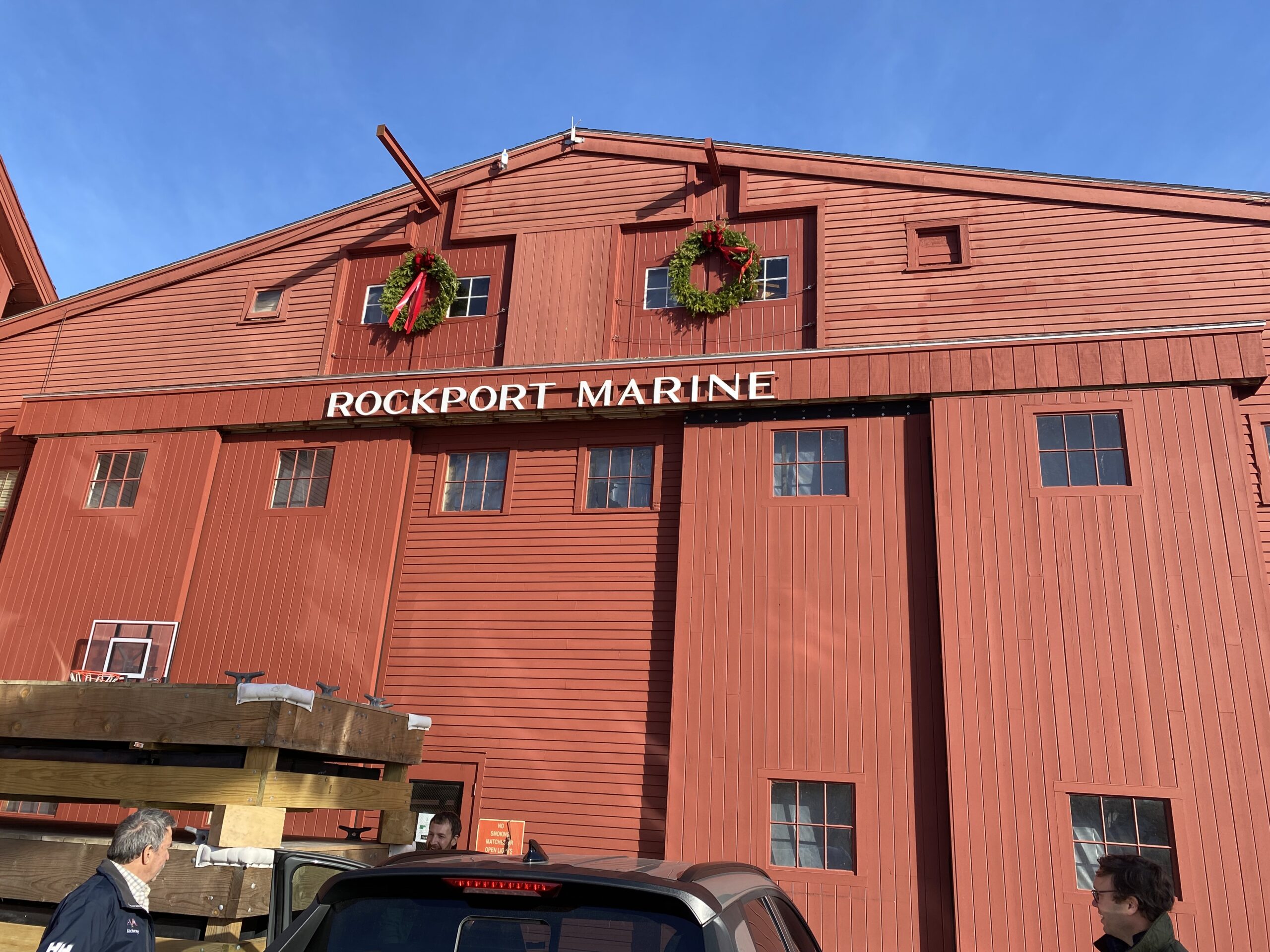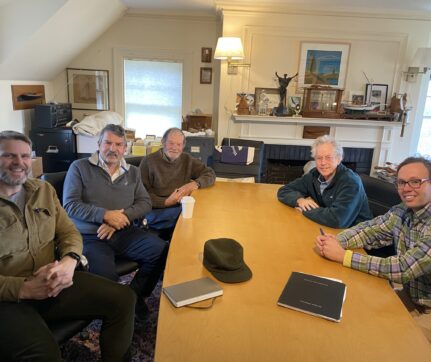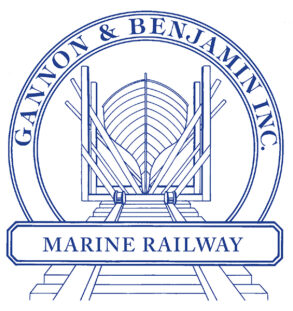By Jesse Terry, CYOA Secretary and Owner of Abigail
As mentioned in the previous CYOA newsletter, I simply asked Steve White for an interview as he stepped down as president of the association. He replied with so much more. When the owner of Brooklin Boat Yard and founder of the Eggemoggin Reach Regatta suggests that you come to Maine to visit to talk, you just ask for a date and fill up the gas tank. Some of my crew felt the same and I picked them up on the way.
Steve offered to bring us around to some yards and to meet with a couple of locals regarding their winter projects. Two of those people included Jon Wilson and Maynard Bray. The road trip instantly transformed into a pilgrimage, and we departed for Maine to find the soul of wooden boats. The path would end in the town of Brooklin, which attracted the greatest minds of a generation. To use a boat analogy, Steve became our ferryman to cross the River Styx on this exploratory tour.

Our first stop was Bristol Marine Shipyard (formerly Samples) in Boothbay Harbor. You open the yard door and immediately enter a museum showing 150 years of the working waterfront. You look out the window to see the windjammer ISAAC EVANS hauled out on a traditional railway. Walking through the sheds, a visitor is treated to a beautiful fleet of classic yachts benefitting from various winter projects. The yard is timeless and a postcard experience in Maine. Our day was rounded out by stopping in at Belmont Boatworks to check in on the latest project of the previous owner of my 1956 Alden Ketch, ABIGAIL.
The next stop north was Rockport Marine, a juxtaposition of the past and future of wood boats. The yard is picturesque, including the red barn-like shed with large holiday wreaths on it. Inside was a Concordia being repaired to Bristol condition alongside a 95’ wood-composite sloop under construction designed by Langan Design Partners. The scale of the new construction project takes your breath away as you see how hi-tech wooden boatbuilding has become.

Other stops included Brooklin Boat Yard and Front Street Shipyard, which also provided the timeless boatyard activity along with the case studies on the future of wooden boats. Brooklin Boat Yard is maintaining a fleet of Winter Harbor 21s (W. Starling Burgess/Alpheus Packard of 1907), while also building two cold-molded Wheeler 55s (think Hemingway’s PILAR). These additional stops left us speechless with the scale and range of projects.

The trail came to an end as we passed the sign for the WoodenBoat magazine campus and drove down the dirt driveway. It was refreshing to have a car as we are usually hitchhiking from the harbor during the ERR to get to Brooklin General Store.
We were then able to have a sit-down with Steve, Maynard (author, photographer, historian, technical editor for WB for 40+yrs, etc), and Jon (founder of WoodenBoat magazine, 50yrs ago). For the next two hours, we discussed the magical past, present, and future of wooden boats and the community. The conversation started like this:
JT: Why do you think people keep preserving, restoring, and building wood boats?
MB: Because they are lovely creations and works of art, like a violin, or floating violins or grand pianos. They represent the spirits of people and engineering genius. They are so much more than a keel, floors, planks, frames, and deck.
SW: The engineering of a wooden boat is important. It shows off the beauty of the boat. In a fiberglass boat, the construction is hidden and you can only see the interior finishes like the cabinets.
MB: It is a wonderful experience to look below deck and see the sheer clamp and knees. And wonder what it does? And how do I replace it? There is the adventure and satisfaction of learning or understanding the engineering of something mechanically fastened together. I find it continually fascinating.
JW: I would never have let them go extinct without a fight. You cannot let that genius of design go. WoodenBoat magazine was founded because I thought people needed to know about these boats as a work of art and to share their secrets and their genius. If only people knew about wooden boats, they would be saved. And I did not know enough not to do it.
JT: Why are there so many wooden boats in Maine?
SW: WoodenBoat magazine was a big part of it as it focused eyes on Maine, which also became a natural draw for craftsmen. The number of skilled craftsmen drew more wooden boats.
MB: WoodenBoat magazine was one part. Joel White, the ERR, Calendar of Wooden Boats, and the craftsman were a big part too.
JW: The Maine experience drew me. I was on Hurricane Island (working for Outward Bound) and fell in love with the granite and soft woods. I was never going back to Connecticut.
The third part of this series will be a continuation of this discussion, particularly related to saving wooden boats in the fiberglass era and how to keep it going.









